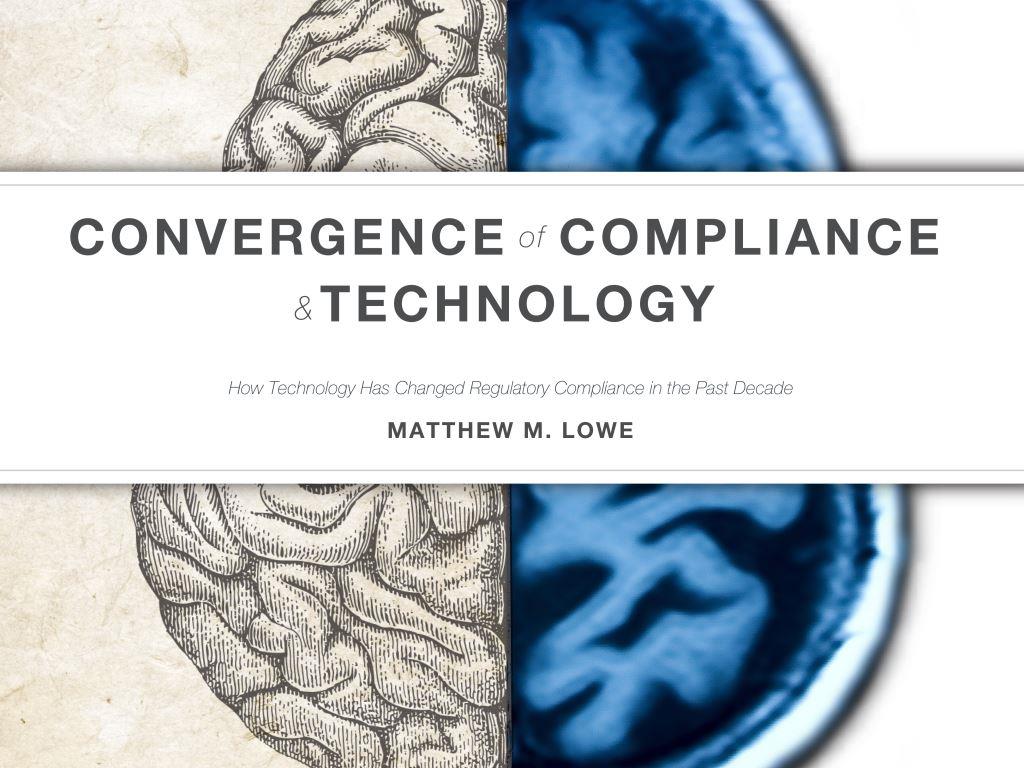In the past decade, technology has spurred the development of medical products and expedited clinical trials and approval processes like never before. Life science companies and regulatory agencies will rely even more on technology in the future.
In part three of this series, I identified more than a dozen laws and initiatives that shaped the rapid modernization of compliance. A technology-driven regulatory structure is certainly necessary to accommodate the steady growth of the life science industry.
Global health care spending is expected to increase by 4.3 percent until 2019, with biotech drug sales and medical device revenues forecasted to reach $445 billion and $454 billion, respectively, in 2019.2

The steady growth of the life science industry requires a technology-driven regulatory structure. (Credit: Matthew M. Lowe)
Five Forecasts
Given such growth, what kind of regulatory landscape can you expect? I feel very fortunate to have been a part of the medical device industry, and now, the software industry serving it. Based on what I have seen from both sides of the fence, I expect the following things to happen because they are, in fact, already beginning to happen.
- Regulators will introduce more and more technology-facilitated standards and regulations.
- As a result, we will see greater interaction among industry, regulators, and technology vendors.
- The importance placed on software quality and validation will increase as compliance becomes more dependent on these solutions.
- Security concerns will continue to rise, both from a piracy and hacking perspective and intentional misrepresentation of data and/or users.
- Biometrics will be used more broadly in helping secure the data and quell concerns of misrepresentation.
Smarter Compliance

The development of “smart” drugs using nanotechnology calls for equally smart compliance. (Credit: Matthew M. Lowe)
We will see compliance get “smarter” as technology takes a greater role in the regulatory submissions and approval processes. There is an abundance of software solutions in the market today, but many life science companies still fail to realize all the benefits of technology. It’s not so much turning a blind eye to the latest technology but refusing to adopt it properly.
Even when organizations automate their quality management systems (QMS), many of them fail to optimize their usage. Rather than take advantage of what technology has to offer, many companies shackle themselves with outmoded processes in a digital world. A survey of more than 900 regulated manufacturers showed that 78 percent of survey participants used disparate systems—a combination of spreadsheets, email, and some form of enterprise content management system (CMS)—to connect their quality activities across the value chain.3
When an organization first switches from paper to electronic documents, there’s a tendency to replicate its paper-based processes instead of adopting fully the new electronic system and automating all processes and workflows. Such was the case when the Institute for Transfusion Medicine (ITxM) first used an automated QMS in 2005.
Patrick Farley, application administrator, said, “When we first moved from paper to electronic documents, we tried to mimic exactly what we did on paper instead of allowing the system to assist in the automation process. Ten years later, we are using every tool we can to automate as much as possible.”4
How Best to Prepare
For all of the modernization and innovation we have seen in the past decade, speeding up the delivery of medicines, medical devices, and therapies from laboratories to the marketplace remains a crucial goal for the industry today. The key to improved time to market is streamlined and standardized processes, which are best achieved through automation.

A cross-functional approach is necessary to help speed up time to market. (Credit: Matthew M. Lowe)
Here are some recommendations for leveraging the latest technology and developing a forward-looking orientation within your organization:
- Develop a cross-functional approach. A silo mentality directly affects your organization’s efficiency, not to mention morale. The right software solution can help you overcome silos by facilitating a cross-functional team approach. Weigh the pros and cons of buying a point solution versus an enterprise platform. If you have a pressing problem (e.g., CAPA or audit), choose an enterprise platform that will allow you to implement a point solution immediately and at the same time enable you to add solutions in the future as your needs evolve.
- Bridge the gap between the quality team and the rest of your organization. Your quality team has a daunting responsibility that the rest of the company might perceive as a “police” role. When it comes to quality issues, the team probably elicits awe and fear in equal parts. Empower your quality team with a robust QMS that will make it easier for other departments to cooperate and participate in compliance.
- Make your processes transparent. Your processes should be easily assessed by regulators and customers alike. It’s impossible to be transparent with a paper-based process that requires physically digging into piles of documents. With an electronic QMS, auditors will go to only one place for all compliance-related documents they need—a single, centralized repository that authorized users can access 24/7 from across the globe.
- Increase your inspection readiness. In the most practical sense, compliance boils down to passing an audit or inspection. It’s agonizing to sit with an FDA investigator or an assessor conducting an ISO certification audit when a requested document is incomplete, unsigned, or worse, missing. There is no better way to make preparedness a habit than through automation.
- Increase your competitiveness by focusing on your core competency instead of routine. Don’t overburden your employees with routine tasks associated with a manual system. If you have a dozen employees whose sole responsibility is to control documents, switch to an electronic system so you can manage your documents with fewer people and redeploy the extra manpower to other areas that add greater value. If budget is a concern, pick a cloud or hosted service that offers access to a robust, compliant, and secure EQMS without the upfront cost of a traditional on-premise system.
Med device firms and other life science companies face largely the same compliance challenges from a decade ago. The difference is the tendency for regulators to turn to an electronic solution rather than manual processes. If your company has yet to make a switch from a legacy system to an FDA-compliant automated system, now is the best time to do it.
Get a better understanding of our discussion about technology and compliance. Read the first part, second part, and third part of this series.

The author’s e-book describes the struggles of life science companies in a changing regulatory environment and offers insights about the future of compliance. (Credit: Matthew M. Lowe)
Matthew M. Lowe, executive vice president at MasterControl, is the author of “Convergence of Compliance and Technology: How Technology Has Changed Regulatory Compliance in the Past Decade.”7 He is a mechanical engineer with over a dozen years of medical device experience in product development, product management, and regulatory compliance. He has successfully launched more than a dozen medical devices and has five patents issued. His regulatory compliance experience includes writing a 510(k) that was cleared by the FDA and managing a multisite, multiyear postmarket clinical study for orthopedic devices.
References
1MasterControl provides software and comprehensive services (quality and compliance consulting, education and training, validation, implementation and project management, technical support, and configuration) to regulated companies worldwide. The company, based in Salt Lake City, Utah, has offices in Europe and Asia, www.mastercontrol.com
2Deloitte’s 2016 Global Life Sciences Outlook, page 4.
3“Closed-Loop Quality Management: Connecting the Value Chain,” page 17, published by LNS Research, 2014.
4“ITxM Marks 10-Year Milestone of MasterControl Usage,” a case study, published by MasterControl. ITxM, based in Pittsburgh, provides blood collection services and distributes more than one million blood components across the country and overseas.


